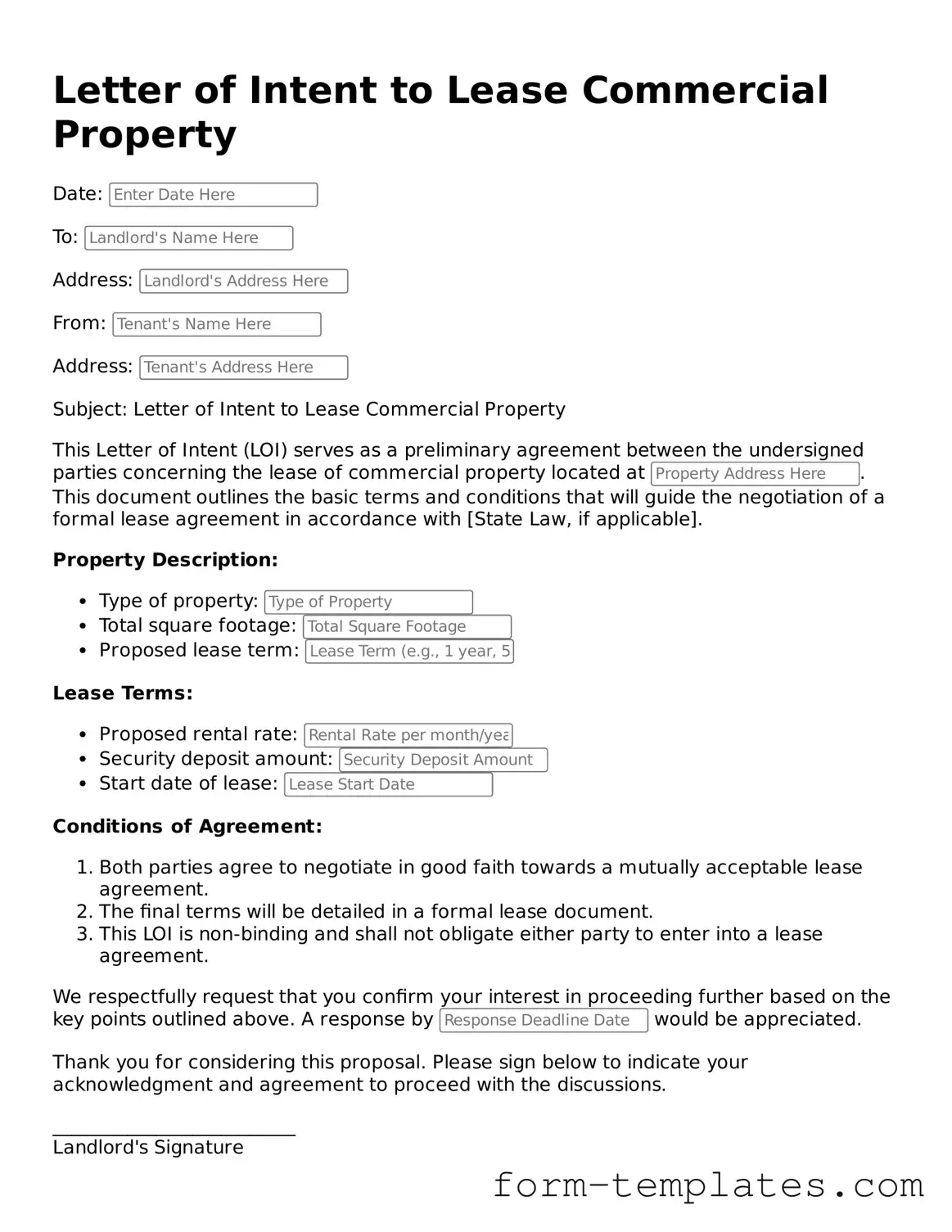Attorney-Approved Letter of Intent to Lease Commercial Property Document
The Letter of Intent to Lease Commercial Property is a preliminary document that outlines the key terms and conditions that both parties agree upon before entering into a formal lease agreement. This form serves as a crucial step in the leasing process, providing clarity and establishing expectations for landlords and tenants alike. By utilizing this form, parties can streamline negotiations and pave the way for a successful leasing experience.
Ready to get started? Fill out the form by clicking the button below.
Open Your Document Now
